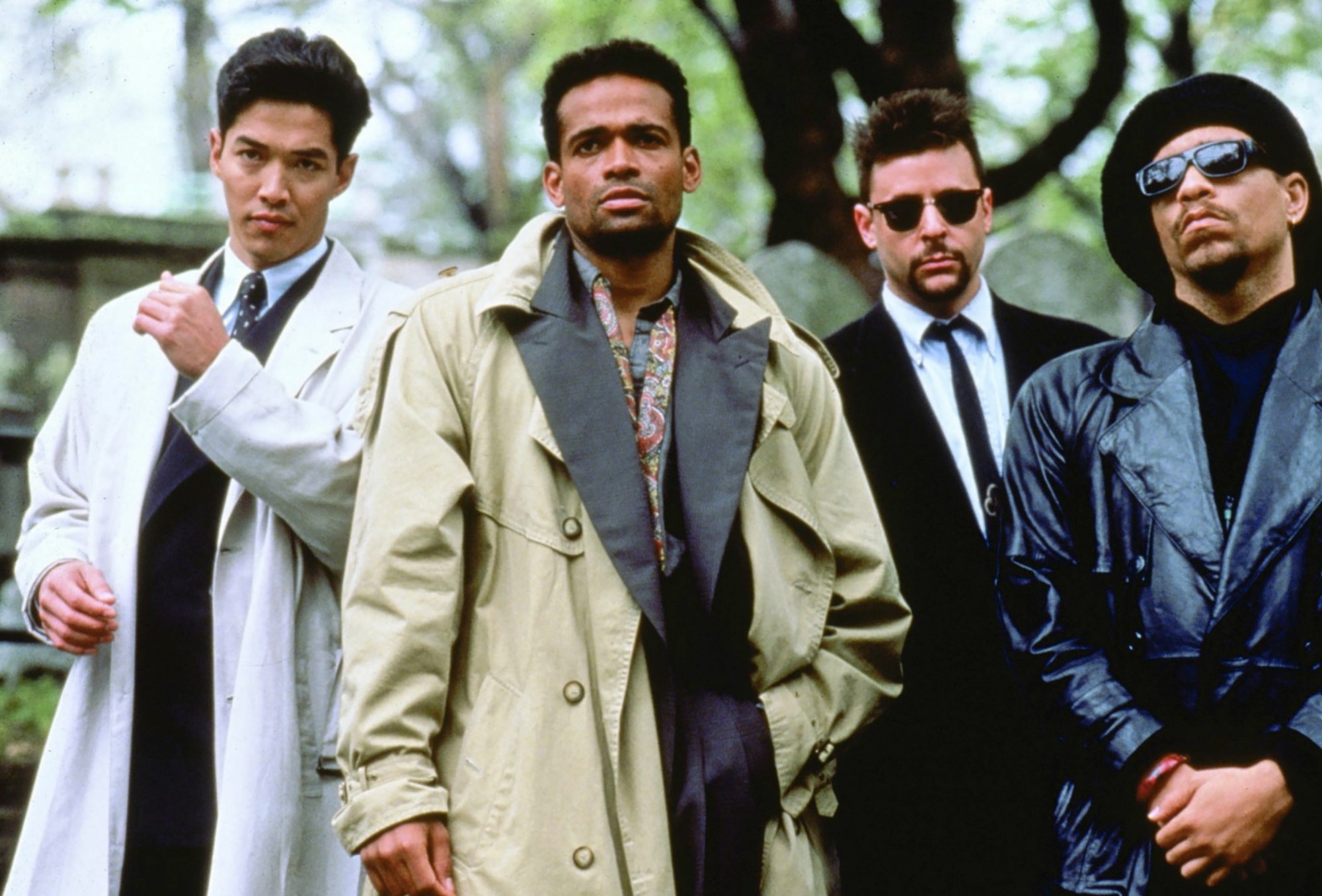
- HFPA
“New Jack City” – American Cinematheque & HFPA
Standing in front of the same Westwood movie theater where his 1991 film New Jack City premiered 31 years ago, filmmaker Mario Van Peebles can’t help but reflect on that night as he celebrates the restored 35mm print opening the “Perpetratin’ Realism” program, sponsored by the American Cinematheque and the Hollywood Foreign Press Association.
The blistering crime thriller and gangster movie opened in theatres on March 8, 1991 – four days after the world first saw the video of LAPD officers beating Rodney King, and the premiere became the setting for brawls and gun violence in New York, Chicago, and Las Vegas, resulting in at least one death. In Los Angeles, Westwood’s Mann Theater overbooked the premiere, leaving ticketholders outside without seats, neighbors complaining about noise and the LAPD shutting down the premiere, inciting riots and looting.
“For a while, the media was reporting that New Jack City incited riots, when nobody there had seen the movie, they’d only seen the Rodney King video,” recalls Van Peebles, standing on the red carpet outside that theater, proudly reclaiming the space and power of Black film. “I went on the news to take it back and said, “You guys are switching it up. This is one of the few gangster movies where – typically in a gangster movie you emotionally connect with the gangster – but in New Jack City, you connect not just with the gangster, but hopefully with the cops, and even more so with the victims. When we finally screened the movie, I stood in the back and saw a guy stand up when Chris Rock’s character was getting addicted to crack and yell, ‘just say no, motherf****r!’”
Set in Harlem in 1986, the film chronicling the crack epidemic and the rise of crack cocaine gangs – starring the relatively unknown Wesley Snipes, Judd Nelson, Ice-T, and Chris Rock – became the top-grossing independent film of 1991, with over $47 million in ticket sales and a platinum soundtrack. It also became the first movie of the ‘gangsta’ or ‘hood’ film genre that dominated Black cinema through much of the 90s, dubbed by scholar and critic Manthia Diawara as “new Black realism.”
After the packed screening, Van Peebles credited an unlikely inspiration with helping him launch his directing career with that film. “I was living on a kitchen floor in Hollywood and thought it was for three months, but it turned into three years. I was getting close to thinking of quitting the business when I got a role in the movie Heartbreak Ridge, directed by Clint Eastwood,” he elaborates. “Clint doesn’t look like me. He doesn’t vote like me, but he turned out to be just a great ally and he introduced me to Warner Bros. And then, as my grandad always said, luck is when preparation meets opportunity.”
The charismatic Black filmmaker, poking fun at himself in a Super Mario Bros T-shirt under his sports jacket, told the crowd he was proud of his part in changing the game for Black filmmakers and actors. “Before New Jack City, I was the funny friend of the lead guy in Heartbreak Ridge. Wesley was the funny friend and Eddie Murphy, Richard Pryor and even Cosby were only cast as the funny guys,” he says. “But it took Mario Van Peebles to see Wesley Snipes as our Pacino, and it took Spike Lee to see Denzel Washington, not as the funny guy but the star, and it took John Singleton to see Lawrence Fishburne, not as the best friend, but the star. Until we were seen as leading men and women, we weren’t in the game and because New Jack City showed we could make money in those roles, it changed everything.
“As my father [the late, ground-breaking filmmaker Melvin Van Peebles] said, “The golden rule is he who makes the gold makes the rules,” and Hollywood is not just white or black, it’s also green. The studios suddenly looked at Wesley making money in my film and decided, we could use him in Passenger 57, and they saw Denzel making money for Mr. Spike Lee and thought, we’ll put him in Pelican Brief with Julia Roberts, and suddenly we had proven we were capable of carrying a movie.”
Pausing to really consider how far things have progressed since he first screened this film, Van Peebles smiles as he recounts, “I flew back from Africa once and had to land through Atlanta and went to a newsstand. They had Barack Obama on Newsweek and Time, Tiger Woods on Sports Illustrated and Michelle Obama on Vogue so it was like Negro central! I think most of America is aware of what we’ve got now because these movies helped changed the cultural game.”